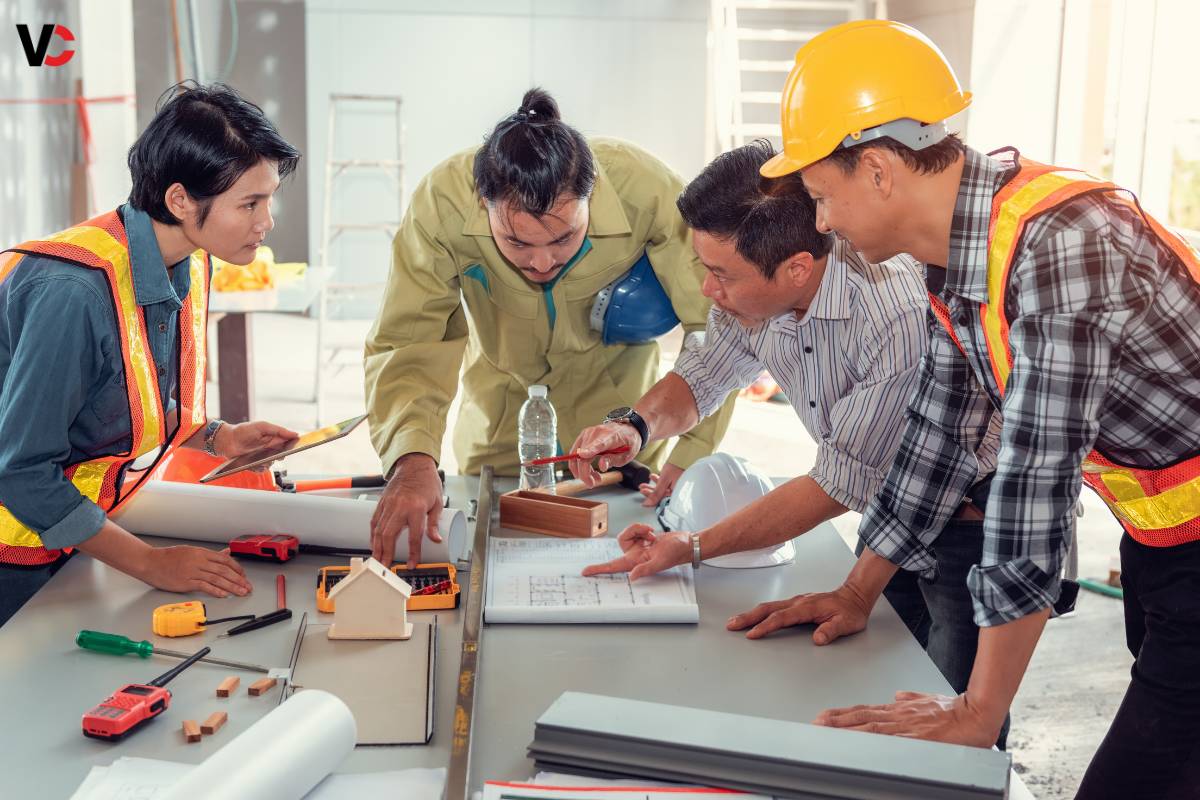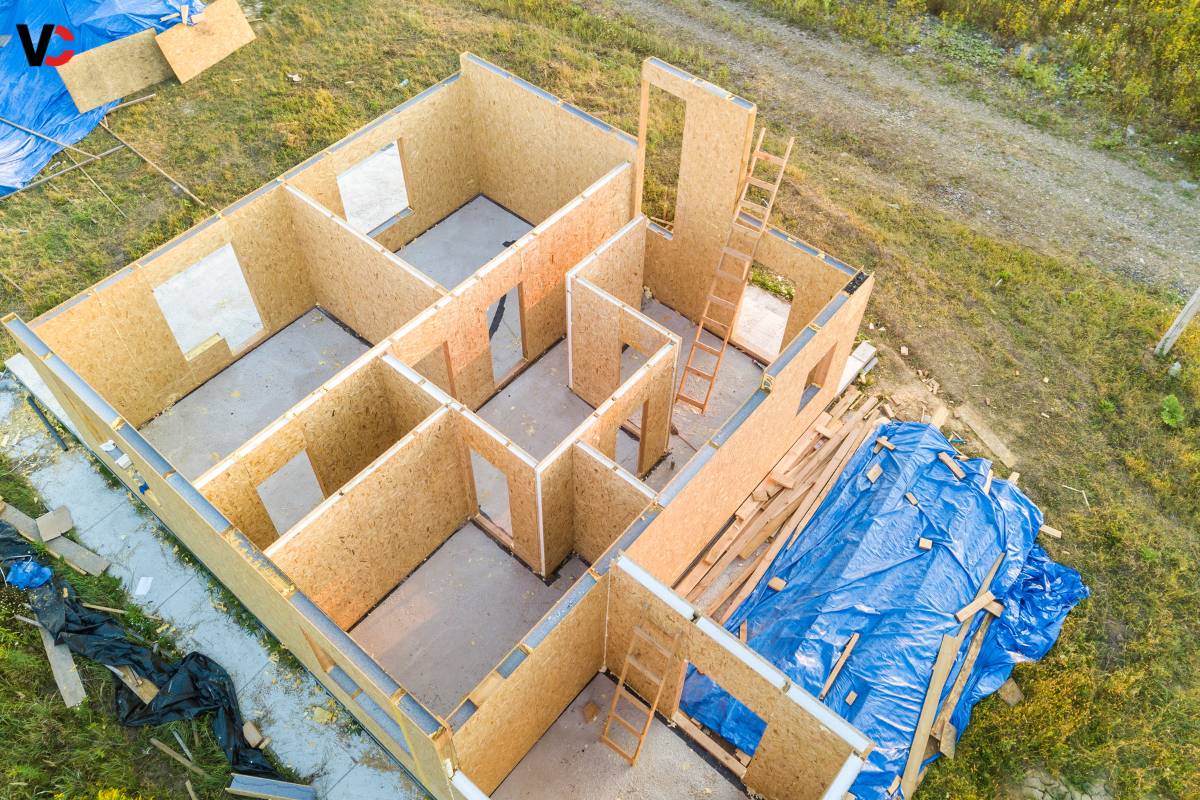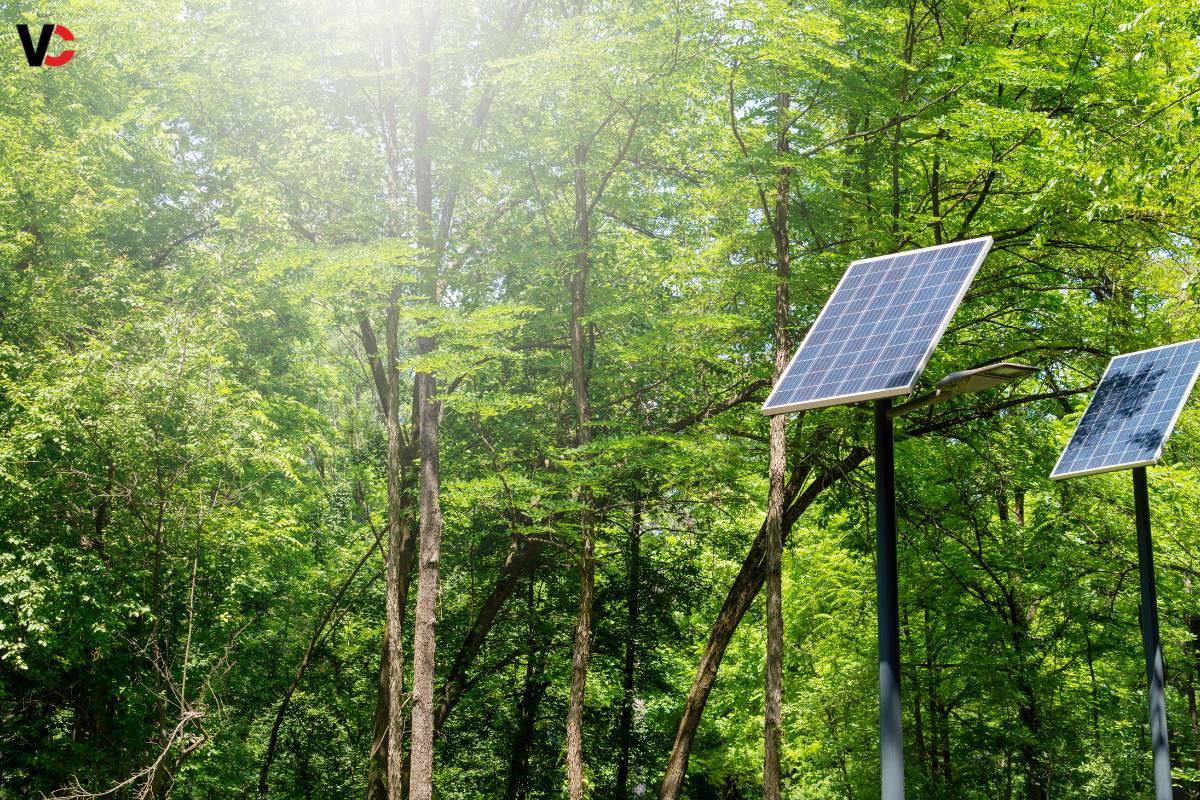The construction industry has been undergoing significant transformation, driven by rapid technological advancements. In 2024, several key tech trends are set to redefine the way construction projects are designed, managed, and executed. The adoption of artificial intelligence (AI) is an increased use of green building technologies, these tech trends are not only enhancing efficiency and productivity but also promoting sustainability and safety. In this article, we will explore and see the top five construction tech trends in 2024 that are shaping the future of the industry.
Here are the 5 Construction Tech Trends in 2024:
1. Artificial Intelligence and Machine Learning

Artificial intelligence (AI) and machine learning (ML) are at the forefront of tech trends revolutionizing the construction industry. These technologies are being integrated into various aspects of construction, from project planning to on-site operations, providing valuable insights and automating complex tasks.
AI-Powered Project Management
AI-powered project management tools are becoming indispensable in construction. These tools use predictive analytics to forecast project timelines, costs, and potential risks, enabling project managers to make data-driven decisions. By analyzing historical data and current project parameters, AI can predict delays, cost overruns, and other issues, allowing teams to address problems proactively.
Enhanced Safety Measures
Safety is a critical concern in construction, and AI is playing a significant role in enhancing safety measures. AI-driven systems can monitor construction sites in real-time, identifying potential hazards and ensuring compliance with safety regulations. For instance, AI-powered cameras can detect unsafe behaviors, such as workers not wearing protective gear, and alert supervisors immediately.
Optimized Resource Management
Resource management is another area where AI is making a significant impact. AI algorithms can optimize the allocation of labor, materials, and equipment, reducing waste and improving efficiency. By analyzing project requirements and resource availability, AI can ensure that the right resources are deployed at the right time, minimizing downtime and maximizing productivity.
2. Building Information Modeling (BIM)
Building Information Modeling (BIM) continues to be a cornerstone of tech trends in the construction industry. BIM involves the creation of digital representations of the physical and functional characteristics of buildings, providing a collaborative platform for all stakeholders involved in a project.
Improved Collaboration and Communication
BIM facilitates improved collaboration and communication among architects, engineers, contractors, and clients. By creating a shared digital model, all parties can access and contribute to the project in real time, reducing misunderstandings and errors. This collaborative approach ensures that everyone is on the same page, leading to more efficient project execution.
Enhanced Visualization and Planning
One of the most significant advantages of BIM is its ability to provide enhanced visualization and planning. With BIM, stakeholders can visualize the entire project in 3D before construction begins, identifying potential issues and making necessary adjustments. This proactive approach helps avoid costly changes during the construction phase and ensures that the project is executed as planned.
Sustainability and Energy Efficiency
BIM is also contributing to sustainability and energy efficiency in construction. By simulating building performance, BIM can identify opportunities for energy savings and optimize building designs for environmental sustainability. This tech trend is crucial in meeting the growing demand for green building solutions and reducing the environmental impact of construction projects.
3. Prefabrication and Modular Construction

Prefabrication and modular construction are gaining momentum as key tech trends in 2024. These construction methods involve manufacturing building components off-site in a controlled environment and then assembling them on-site, offering numerous benefits in terms of efficiency, cost, and quality.
Speed and Efficiency
Prefabrication and modular construction significantly speed up the construction process. By manufacturing components in parallel with site preparation, the overall project timeline is reduced. This method also minimizes weather-related delays, as most of the work is done in a controlled environment. As a result, projects can be completed faster, allowing for quicker occupancy and return on investment.
Cost Savings
Cost savings are another significant advantage of prefabrication and modular construction. By reducing on-site labor and minimizing waste, these methods lower construction costs. Additionally, the controlled manufacturing environment ensures higher quality and consistency, reducing the need for costly rework and repairs.
Sustainability
Sustainability is a key consideration in modern construction, and prefabrication and modular construction are contributing to greener building practices. By optimizing material usage and reducing waste, these methods have a smaller environmental footprint compared to traditional construction. Additionally, modular buildings are often designed to be energy-efficient, further promoting sustainability.
4. Drones and Robotics
Drones and robotics are transforming the construction industry, offering new ways to monitor, inspect, and execute projects. These tech trends are enhancing efficiency, accuracy, and safety on construction sites.
Site Surveys and Inspections
Drones are revolutionizing site surveys and inspections by providing aerial views and capturing high-resolution images and videos. These capabilities allow for accurate mapping and monitoring of construction sites, identifying potential issues, and ensuring compliance with design specifications. Drones can access hard-to-reach areas, reducing the need for manual inspections and improving safety.
Automated Construction Processes
Robotics are being increasingly used to automate construction processes. From bricklaying robots to autonomous vehicles for material transport, these technologies are improving productivity and reducing the reliance on manual labor. Robots can perform repetitive and physically demanding tasks with precision and consistency, freeing up human workers for more complex and strategic activities.
Enhanced Safety
Safety is a paramount concern in construction, and drones and robotics are playing a crucial role in enhancing safety measures. Drones can monitor construction sites in real time, identifying potential hazards and ensuring compliance with safety regulations. Robotics can take over dangerous tasks, such as working at heights or handling hazardous materials, reducing the risk of accidents and injuries.
5. Green Building Technologies

Green building technologies are among the most influential tech trends in construction, driven by the growing demand for sustainable and energy-efficient buildings. These technologies are not only reducing the environmental impact of construction but also promoting healthier and more comfortable living spaces.
Renewable Energy Integration
The integration of renewable energy sources, such as solar and wind power, is becoming more prevalent in construction projects. Buildings are being designed to harness renewable energy, reducing reliance on fossil fuels and lowering carbon emissions. Solar panels, wind turbines, and geothermal systems are being incorporated into building designs, making them more sustainable and energy-efficient.
Energy-Efficient Building Materials
Energy-efficient building materials are another crucial aspect of green building technologies. Insulated concrete forms, low-emissivity windows, and cool roofs are examples of materials that improve energy efficiency and reduce heating and cooling costs. These materials are not only environmentally friendly but also contribute to healthier indoor environments by enhancing thermal comfort and reducing energy consumption.
Water Conservation
Water conservation is a key consideration in green building technologies. Innovative systems, such as rainwater harvesting, greywater recycling, and low-flow fixtures, are being integrated into building designs to reduce water usage. These technologies help in conserving water resources and lowering utility costs, making buildings more sustainable and resilient.
Conclusion
The construction industry is undergoing a significant transformation, driven by these five construction tech trends in 2024. Artificial intelligence and machine learning are enhancing project management, safety, and resource optimization. Building Information Modeling (BIM) is improving collaboration, visualization, and sustainability. Prefabrication and modular construction are offering efficiency, cost savings, and sustainability. Drones and robotics are revolutionizing site surveys, inspections, and automated processes, enhancing accuracy and safety. Green building technologies are promoting renewable energy integration, energy-efficient materials, and water conservation, making buildings more sustainable and environmentally friendly.
As these tech trends continue to evolve, they are set to redefine the construction landscape, making projects more efficient, cost-effective, and sustainable. The adoption of these technologies is not only improving the way construction projects are executed but also contributing to the overall growth and development of the industry. Embracing these tech trends is essential for construction companies to stay competitive and meet the demands of the future.
In summary, the construction industry is on the brink of a technological revolution, with these five tech trends leading the way. By leveraging the power of artificial intelligence, Building Information Modeling, prefabrication and modular construction, drones and robotics, and green building technologies, the industry is poised for a more efficient, sustainable, and innovative future.


















